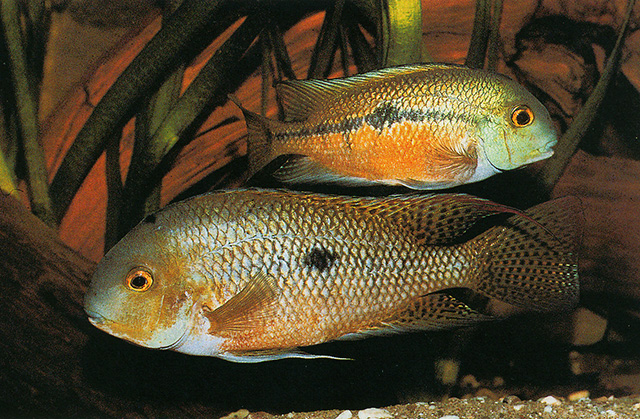| Cichlidae (Cichlids), subfamily: Cichlasomatinae |
| 16.5 cm SL (male/unsexed); 20 cm TL (female) |
|
benthopelagic; freshwater; pH range: 7 - 8; dH range: 9 - 20 |
| Central America: Atlantic slope, from the San Juan drainage, including Lake Nicaragua, in Costa Rica and Nicaragua, to the Matina River drainage in Costa Rica. |
|
Dorsal spines (total): 18-19; Dorsal soft rays (total): 9-11; Anal spines: 7-8; Anal soft rays: 7-9. This species can be distinguished by the dark line running through the middle of the body and the large black blotch positioned midlength; head profile extremely curved with the mouth on the lower part of the head; in males, the scales have dark edges producing a reticulated pattern, their fins with many dark spots, and a red edge to the dorsal fin; both males with iridescent, greenish-blue head and with gold to copper-colored bodies (Ref. 44091). |
| Inhabit lakes and rivers with slow to moderate currents, between 5 to 200 m elevation (Ref. 36880). Juveniles feed on aquatic insects, while adults feed on bottom detritus, seeds and leaves. Also naturally feed on snails and other mollusks, but will accept a variety of food in captivity (Ref. 44091). Maximum length 25 cm TL (Ref. 2060). |
|
Least Concern (LC); Date assessed: 17 June 2019 Ref. (130435)
|
| harmless |
Source and more info: www.fishbase.org. For personal, classroom, and other internal use only. Not for publication.
